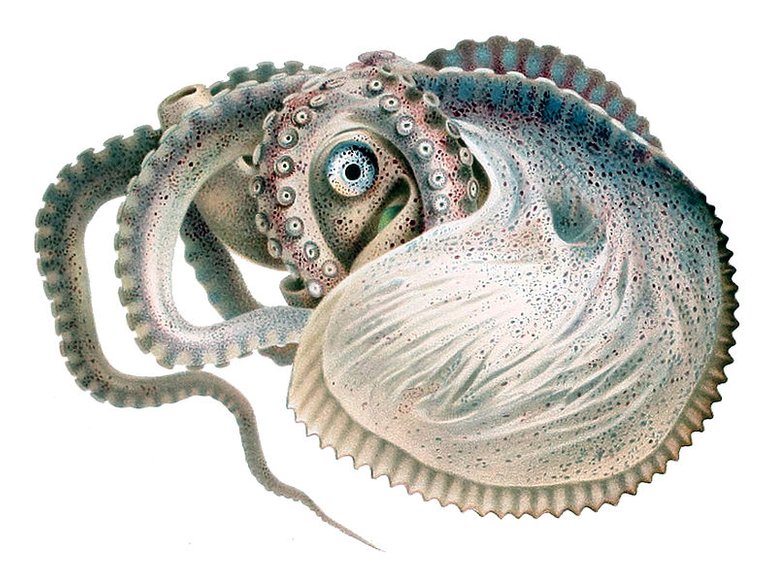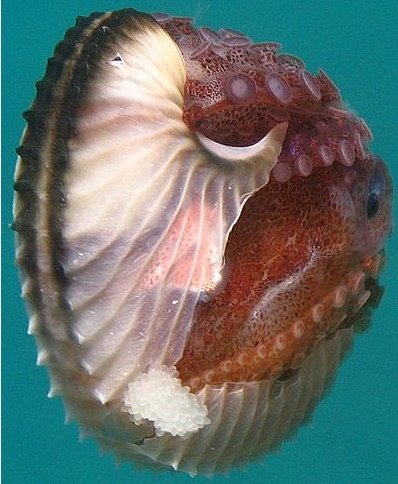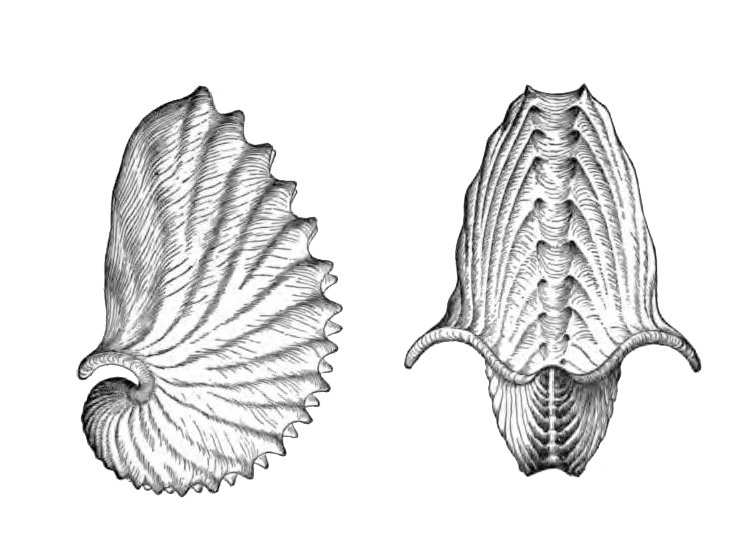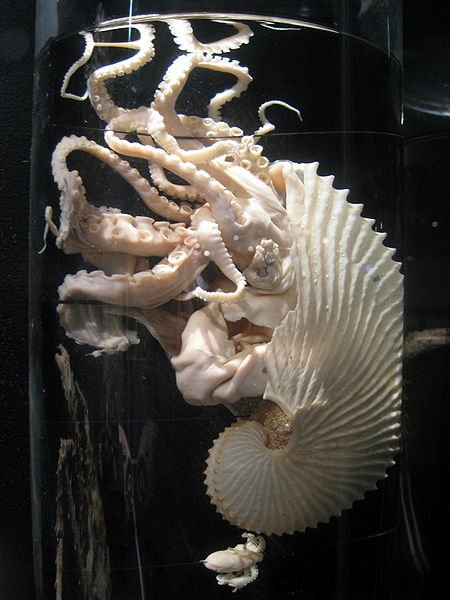
In the warm waters of the Mediterranean Sea and the Atlantic Ocean, floating as if it did not have the ability to move at will, you can see an animal that at first glance looks like a snail that we have already had the opportunity to observe, but when we looking at it in detail we It will surprise what it really is. Visualized for the first time in the times of Aristotle, this animal aroused the curiosity of scholars for its peculiar appearance, which does not seem to be in accordance with mollusks of its kind.
A Octopus with Shell

Suspended in the ocean as if it were a simple lifeless shell, a striking animal is found that does not seem to be what it appears, it is a kind of mollusk. Known as Argonauta octopus, it is a cephalopod that, out of its shell, has eight tentacles with their respective suckers just like any octopus. Its peculiar name is given by its characteristic shell, because at first no one understood what that shell was to which long arms protruded; hence the naturalist Carl Linneo gave him the name of Argonauta octopus, a name that in Latin translates as "fast sailor".
These distinctive creatures, like some of their species show a clear dimorphism between sexes, while the privileged female reaches approximately fifty centimeters, the male is only two centimeters long. Another exclusivity that the female possesses is that she has the ability to make the shell feature, while the fragile male does not have the same tools to do so.
A Very Exclusive Shell
In nature, as we all know, each animal has its own qualities; in the case of this species of octopus, the female has certain advantages. This cephalopod, segregates the material with which it builds its cover from glands that are located at the tip of two of its tentacles, its main component is calcium carbonate (chemical substance found in the shells of certain organisms such as shells of egg). In ancient times, when this species of octopus had not been studied at depth; it was believed that these animals stripped others of the shells and then used them, then presumed that they used it to house their eggs and thus give them a safe refuge; now studies have shown that not only that is the function, they also use them to ascend and descend in the water with complete peace of mind.
Image 3. Argonauta argo shell.

Thanks to some "air capsules" that contain the shells, the Argonauts use a kind of jet propulsion to descend effortlessly, this method is very similar to the one used by the cuttlefish thanks to the funnel located at the front. By means of this, they adjust the amount of air previously obtained in the surface, choosing thus the depth to which they wish to be. This mechanism allows them to save muscle energy, a great advantage in relation to other octopuses; The mentioned shells also provide a method of defense, because, if they are under threat, the female submerges in the shell and produces metallic flashes for the attacker to move away. Another important observation is that the argonaut can leave her shell and return without any problem, but if in that process she loses it, she will die in a few days.

The more we know about the octopuses and the characteristics that each species possesses, the greater the degree of impression that these are leaving in the scientists because, know that there is an octopus that can make a shell for various purposes, is the irrefutable proof of intelligence that have these cephalopods and all they are capable of doing to survive in an environment as full of dangers as the ocean is.
This is all dear community, to say goodbye I would like to leave the opinion of the expert in this kind of octopus Julian Finn, who says that:
There is a process in five steps whereby the females take air from the sea surface and transport it to the depths, where they use it to float at will. This study shows that the air inside the shells of the Argonaut females is not only beneficial for them, but essential for their survival.
Information Extracted of:
- The rarest octopus in the world in an incredible concentration never before seen.
https://www.vistaalmar.es/especies-marinas/peces-extranos/5432-el-pulpo-mas-raro-del-mundo-en-una-increible-concentracion-nunca-antes-vista-video.html - Revealed the "secret" of the Argonauts.
http://abcblogs.abc.es/nieves/public/post/desvelado-el-secreto-de-los-argonautas-3759.asp/ - Argonauta argo.
http://animalandia.educa.madrid.org/ficha.php?id=258 - Solved the ancient mystery about the Argonauts.
https://www.vistaalmar.es/especies-marinas/general/1099-resuelto-el-misterio-milenario-sobre-los-argonautas.html - Mystery of the floating octopus solved.
http://www.bognorphoto.com/misterio-del-pulpo-flotante-solucionado.html
Source of Images